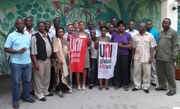Barclays - One Africa

Divide and rule – or merge and rule? Ever since 1925, when Barclays set up its Dominion, Colonial and Overseas operation, the British bank has toyed with how best to play its Africa hand. When it bought 55.5 per cent of Absa in 2005, it planned to roll its own operations on the continent into the South African lender. There would be less capital tied up in myriad outposts, operating synergies and a single reporting structure. But regulatory approval covered only its initial acquisition, not the wider Africa plan. South African regulators wanted Barclays to integrate Absa first. Seven years later, the British bank is trying its luck again, as part of its “One Africa” strategy. The plan is fraught with complications, however.
Barclays will still need to convince regulators that the plan is not just a ruse to offload its mature, wholly owned operations in Ghana, Tanzania, Uganda, Zambia and the Indian Ocean, and its majority stakes in separately listed units in Kenya and Botswana, to suit its own book. In theory, by selling the businesses to Absa, it could consolidate 100 per cent of the profits but be on the hook only for slightly more than half the risk if things went pear-shaped.
The UK bank’s stake in Absa would rise if it took shares in payment – given that the South African bank has limited surplus capital. Then there is valuation. Based on Macquarie First South’s estimated valuation of R27.5bn (£2.1bn) for the African package, Absa minorities (including its black empowerment shareholders) would be diluted by about 10 percentage points. To avoid that, the banks could sell their units to a new vehicle in exchange for shares.
The African units are already managed by a joint Absa-Barclays board in Johannesburg. But, following their banks’ 9 per cent fall in half-year profit on rising credit losses, Absa minorities should insist it first fixes itself at home.

